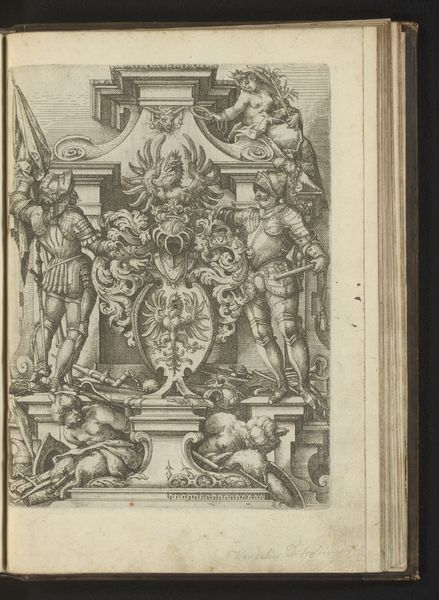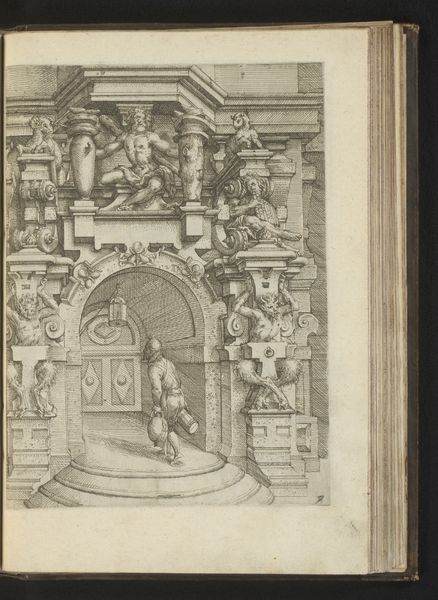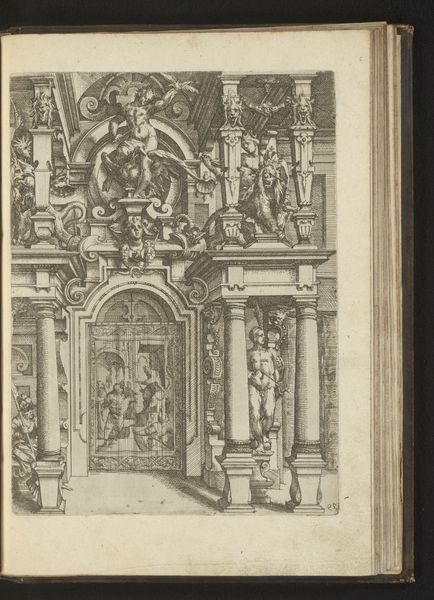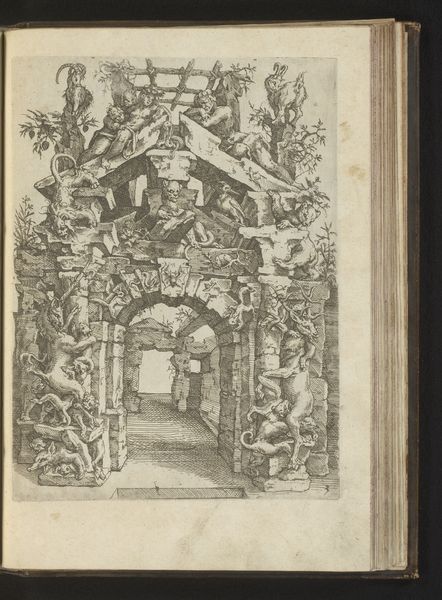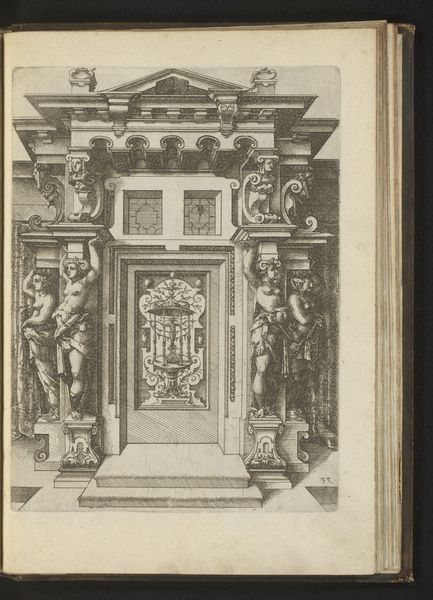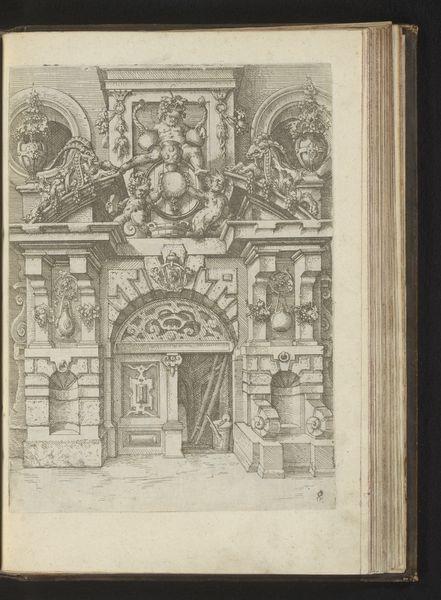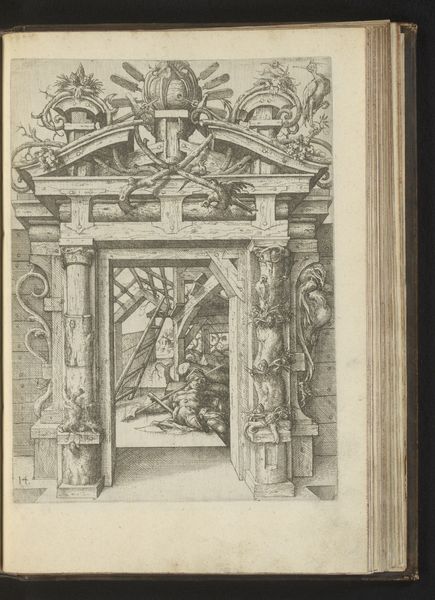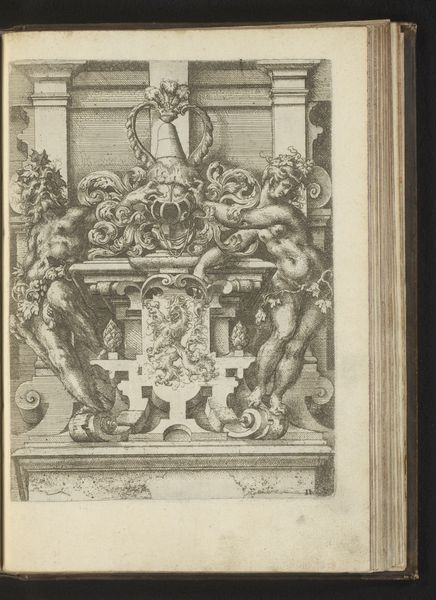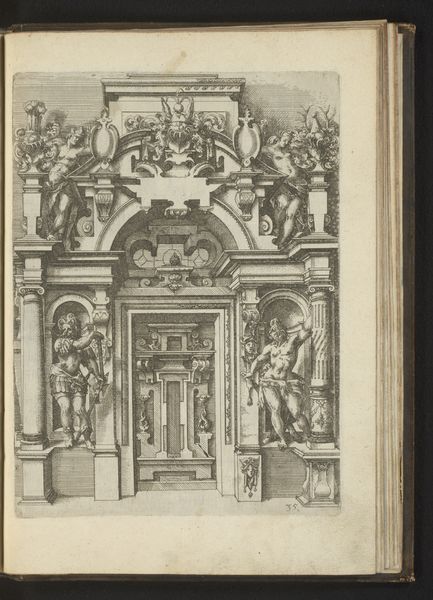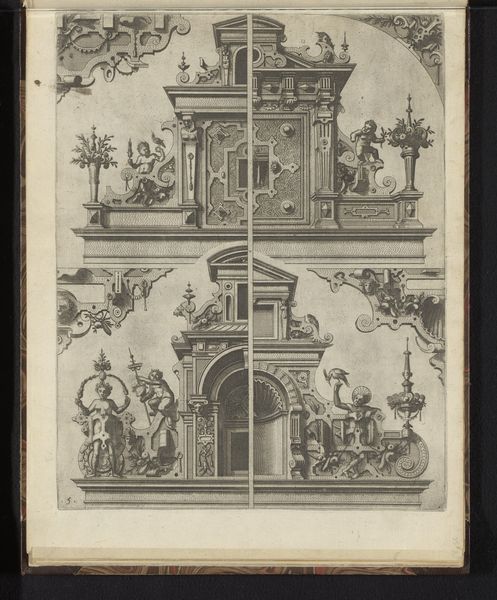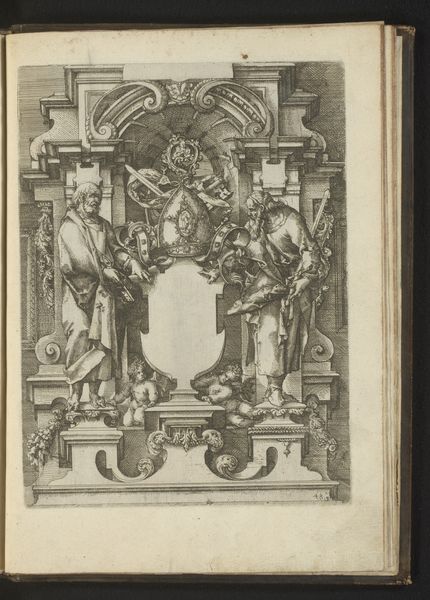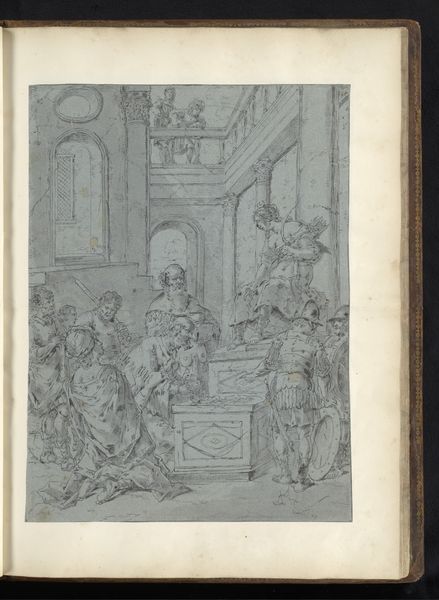
Knekelhuis gedecoreerd met beenderen, rouwende mensen, kaarsen en wapens 1593 - 1595
0:00
0:00
engraving
#
medieval
#
allegory
#
baroque
#
mannerism
#
vanitas
#
history-painting
#
engraving
Dimensions: height 252 mm, width 186 mm
Copyright: Rijks Museum: Open Domain
This print, “Knekelhuis gedecoreerd met beenderen, rouwende mensen, kaarsen en wapens,” was made by Wendel Dietterlin around 1590, using the technique of engraving. The image has a monochromatic tone, with the bone-house design dominating the composition. The use of engraving, with its precise, controlled lines, enabled Dietterlin to capture intricate details. Note the textures of bone, fabric, and stone. The artist was drawing upon a well-established printmaking tradition that placed a high premium on technical skill. The image speaks to the period’s preoccupation with mortality, a theme often explored through such prints. The engraving process would have been labor-intensive, requiring the artist to meticulously carve into a metal plate, in reverse. This craft-based practice, situated between artistry and skilled labor, underscores the cultural values placed on both creativity and technical mastery in the late 16th century. The print allowed for the wider distribution of Dietterlin's vision, embedding it in the cultural consciousness. It's a reminder that even in the face of death, the work of human hands endures.
Comments
No comments
Be the first to comment and join the conversation on the ultimate creative platform.

